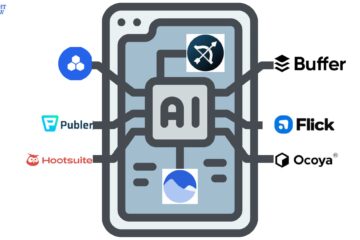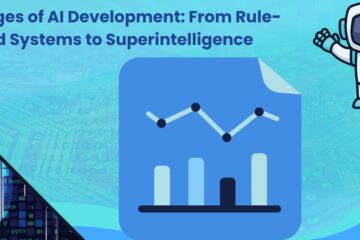In today’s world of digital firsts, customer expectations have changed quickly.
Consumers of today demand quick, precise, and tailored interactions from the brands they interact with. Additionally, businesses are finding it difficult to meet these higher expectations, which is why they are adopting cutting-edge technologies to improve customer engagement.
Conversational AI (CAI) is at the forefront of these technologies and is a game-changing solution that is changing how businesses engage with their clientele.
This blog will examine how CAI technology is transforming customer engagement throughout the whole customer journey and how companies can incorporate CAI into their tech stack to offer modern customers an effective, scalable, and customised experience.
The Development of CAI:
Over the past ten years, CAI has benefited greatly from the AI revolution. The rule-based, pre-programmed scripts that underpinned early solutions made it difficult for them to respond to a variety of questions or offer genuinely individualised service.
With the help of advanced Machine Learning (ML) algorithms, today’s AI-powered bots can comprehend context, intent, and sentiment, facilitating more engaging and natural interactions across various channels, including social media, email, chat, and voice.
Now, CAI bots are better equipped to handle complex queries and provide dynamic, personalised responses, frequently with little assistance from humans, thanks to the addition of generative AI (gen AI) and the ability to efficiently use customer data.
Boosting the customer journey: A strategy driven by CAI
One of the most significant features of CAI is its genuine adaptability, or its capacity to help clients at every turn, from initial interaction to post-purchase assistance. As outlined below, CAI bots can interact with potential customers in real time, around the clock, from the moment they find a brand.
- Creating leads
One of the most important things that sales and marketing teams can do is to generate high-quality leads. By interacting with potential clients in real time on websites or social media platforms, CAI can improve lead generation initiatives. They can collect vital information through outbound campaigns and easily transfer qualified leads to sales teams.
- Product identification
Users can use conversational search to find what they’re looking for more quickly, rather than sifting through static menus or an infinite number of product categories. CAI systems can analyse user preferences, behaviour, and previous interactions across a variety of channels, particularly when integrated with enterprise applications such as customer relationship management (CRM) and customer data platforms.
- Obtain assistance
CAI can help customers make well-informed purchasing decisions by offering insights on related products, warranty options, and bundle deals. The chatbot can intervene with prompt offers or discounts to persuade a hesitant customer to finish the transaction. Additionally, these chatbots follow industry-standard security protocols and seamlessly integrate with payment gateways like PayPal and Apple Pay, enabling safe transactions right within the chat interface.
- After-purchase support
Customers can easily get assistance from CAI with order confirmation, receipt creation, and subsequent steps like shipping information. It allows brands to communicate with consumers, asking about their experiences and providing advice on how to make the most of their products. Additionally, the chatbot can help customers with exchanges, refunds, and returns, making the process simple.
- Retention of customers
After a customer leaves, CAI can arrange to follow up with them to send tailored emails or messages that highlight new features, enhancements, or special return deals. Automating win-back initiatives guarantees that the brand keeps the relationship going and shows that it is committed to resolving any past problems.
The following exhibit shows how a potential customer navigates a fictitious e-commerce website, TechTrends, that has implemented CAI throughout the customer journey in order to demonstrate the extensive support that CAI offers.
Best practices for implementing CAI solutions:
Although CAI offers businesses a lot of opportunities, careful planning and execution are necessary for successful implementation. To successfully implement and utilise CAI’s capabilities, the following best practices are advised.
Start small and plan carefully: Prior to putting any CAI solution into action, it’s critical to establish specific goals and find small pilots that can yield a rapid return on investment (ROI). With this method, businesses can test the CAI solution, get input, and then progressively move into more complicated areas as they become more comfortable using the technology.
Conversational flow focused on the customer: It is essential to carefully consider how to create conversational flows that are easy to understand and use. This includes adding fallback options, such as human handover, to ensure smooth transitions if the chatbot encounters complex questions or irate customers.
Create a strong data infrastructure and integrations: Businesses should make sure that all of the sources of customer data, such as CRM, historical chat logs, and behavioural data, are integrated and updated frequently as usage increases. For omnichannel deployments, attention must also be paid to developing middleware and application programming interfaces (APIs) that enable context transfers across channels.
For scalability, use modular architecture: Certain components of the CAI solution can be improved and scaled without affecting the system as a whole, thanks to modular, microservices-based architectures that make testing, upgrades, and scaling simple.
Give AI governance and transparency top priority: In addition to following rules, AI explainability is essential, particularly in regulated sectors like healthcare and finance, to assist agents and clients in comprehending the rationale behind AI recommendations.
Accept change: A cultural shift that emphasises that CAI is a tool to support human roles rather than to replace them is also necessary for the transition to CAI. Customer-facing teams can more successfully use CAI if they receive training and cultivate an open mindset.
In conclusion
What was formerly a collection of disconnected transactions can be transformed into a seamless, user-friendly, and highly customised customer journey thanks to CAI’s capabilities.
This simplified strategy boosts conversion rates for the company, saves time for the client, and ultimately results in a more effective and pleasurable experience.
CAI is expected to make significant strides in the future. As CAI bots develop into agentic systems, they will become self-governing digital coworkers with the ability to make decisions on their own and plan.
These systems will be able to process vast volumes of data, identify intricate patterns, and gain knowledge from their experiences and actions in real-time settings by combining deep learning and reinforcement learning.
For business executives, conversational AI’s true impact lies not only in implementing it in isolated ways but also in integrating it deeply into business processes throughout the customer journey, where it can provide quantifiable benefits.


